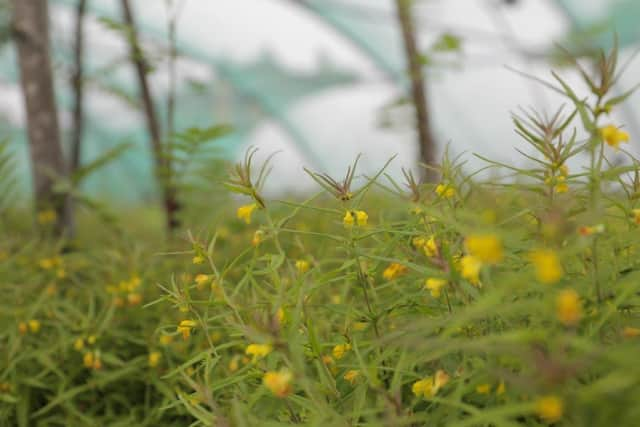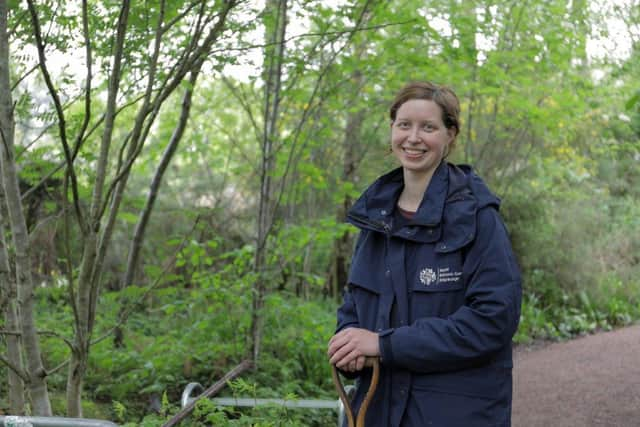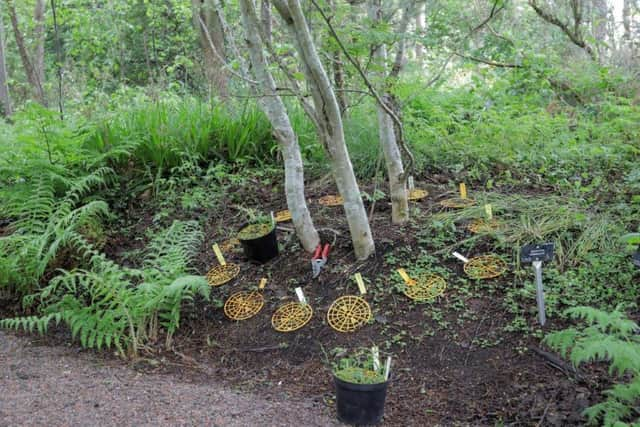'This is an essential part of our wonderful diversity'- Edinburgh's Botanics in fight to save threatened Scottish wildflower
and live on Freeview channel 276
Let us know what you think and join the conversation at the bottom of this article.Small Cow-wheat (Melampyrum Sylvaticum) is only known at around 20 sites in Scotland all but three of which are considered unstable due to their limited size.
The decline in populations and numbers of plants in them has been attributed to loss of its required habitat to conifer plantations, application of fertiliser at woodland edges, grazing and trampling by livestock.
Advertisement
Hide AdAdvertisement
Hide AdThe "fragile beauty" with bright yellow flowers is now under protection at the Royal Botanic Garden Edinburgh (RBGE) after being taken into the institution's native plant conservation programme.


READ MORE: Royal Botanic Garden Edinburgh team up with world-renowned mixologist to create floral cocktails
Martine Borge, a Scottish Rare Plant Programme Horticulturist at RBGE said: "Many of Scotland’s most extraordinary plants are struggling for survival and dangerously small populations are under threat
"Small Cow-wheat is 'nationally scarce' and we are supporting the Cairngorms Nature Action Plan in working on it.
"It is a delicate little thing with pairs of golden-orange beak-like flowers running up its stem, like twins, surrounded by sword-like lush green leaves pointing in every direction.
Advertisement
Hide AdAdvertisement
Hide Ad

"This eccentric plant is hemiparasitic, meaning it needs to find a host plant of another species to plug its roots into, in order to grow successfully.
"It has very fussy habitat demands and would give Goldilocks a run for her money -- it wants to be permanently moist but not wet; it abhors direct rainfall which it would be totally squashed by, so would like to be carefully sheltered but not dry, and only if it can have just the right amount of light, not too much and not too little.
"As if that wasn’t enough, it also only lives for one year. If any population of Small Cow-wheat is to survive, a new generation must be able to grow from seed every year.
"The seeds it produces are so very heavy that they cannot travel by themselves and are believed to be completely reliant on Wood Ants to pick them up and carry them to a good spot every year.
Advertisement
Hide AdAdvertisement
Hide Ad

"On top of all of this the Wood Ant is sadly threatened in Scotland."
READ MORE: Photographer spent six months magnifying seeds and fruits at the Royal Botanic Garden Edinburgh
She added: "This is a lovely and sensitive plant, an essential part of our wonderful diversity. It absolutely deserves to have places where it can grow happily even, for now, if that means it needs a generous benefactor to play host in the city."
Ms Borge said that despite Scottish native plants being well recorded and understood, the nation's biodiversity is still "frighteningly at risk", largely because there is so little suitable habitat for wild plants to call home.
Some of Scotland’s most extraordinary and valuable plants are in dangerously small populations, tucked into ever decreasing nooks where their opportunities to thrive or survive are restricted. Other factors like climate change, competition from invasive species and pathogens, and damage from grazing, she said, increase the pincer effect of pressure on these plants.
Advertisement
Hide AdAdvertisement
Hide AdVisitors can see the first small population of Small Cow-wheat alongside other Scottish native plants in the attraction's Experimental Garden, where researchers from RBGE and University of Edinburgh are investigating the genetics and breeding behaviour of plants to discover more about how they have evolved, while scientists and horticulturists work to secure the plant's future.
Ms Borge added: "We are doing everything we can to prevent the worst from happening. By growing such plants in our four Gardens, we are providing an insurance policy against their loss in the wild.
"The goal is to increase the numbers by growing them here in safe environments and to understand as much as we can about them.
"Over the past year, we have been assessing the possibilities and considering different horticultural methods that might allow this lovely plant to be reintroduced into suitable areas.
Advertisement
Hide AdAdvertisement
Hide Ad"This involves configuring how to store the seed in a way in which it can flourish and considering the species’ preference to different host plants. We are also working out whether it is better to let the seed fend for itself directly in a natural plot, or get it settled with a host in a container before trying to get them established together later in the season."
A message from the Editor:
Thank you for reading this article. We're more reliant on your support than ever as the shift in consumer habits brought about by coronavirus impacts our advertisers.
If you haven't already, please consider supporting our trusted, fact-checked journalism by taking out a digital subscription.
Comment Guidelines
National World encourages reader discussion on our stories. User feedback, insights and back-and-forth exchanges add a rich layer of context to reporting. Please review our Community Guidelines before commenting.